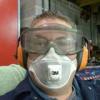
Rebuild Carb - Before Or After Engine Run In?
#1

Posted 02 April 2025 - 04:42 PM
My 1275 rebuild started due to big end failure, as confirmed by my mini specialist. At that time (3 years ago now) they tuned the carb to get it running nicely, replacing the spring. The carb wasn't touched since then, has been on the garage bench. As the 1275 is now a 93 with an Evo1 cam, maniflow exhaust and new dizzy etc it will need a new carb needle, and as all of the other parts have shown wear I have been planning on rebuilding the carb before running in the engine. My concern is that I'm not familiar at all with tuning carbs and so was going to get her set up on a rolling road after her initial 20min 2000rpm bedding in. Is it then more sensible to leave the carb and only swap the needle when bedding in, then rebuild the carb then get her set up? Or do I get on with rebuilding, get an AFR gauge and start learning on the fly and trust the numbers? Or rope in professionals before bedding her in?!
Any advice much appreciated, don't want to ******* up 3 years effort and cost!!
#2

Posted 02 April 2025 - 05:33 PM
#3

Posted 02 April 2025 - 05:42 PM
I'd get it trailered to the rolling road (don't run it) use the dyno to run it in under load
Thereby getting them to set up the carb immediately on first start? Ie rebuild first?
#4

Posted 02 April 2025 - 07:53 PM
Grenaded the fully rebuilt engine in my Porsche, many years ago, not having the carbs done at the same time as the engine. A sticking float had caused a hydraulic lock, bending a conrod, which fractured, severed the opposing conrod, smashing the cylinder heads and chopped the crankcases in half.
I won't make that mistake again!
#5

Posted Yesterday, 05:18 AM
Ideally, the Carb should be re-built before the engine is started for the first time. You can take your best guess for a needle to use to run it in on, then put it on a rolling road to sort the fuel and ignition requirements.
I'm not at all a fan of breaking in engines on a commercial dyno (rolling road). Most Piston Rings need a minimum of 20 hours run time before you can start loading up the engine and it's sealed well enough to calibrate the fuel and ignition needs. To to that on a dyno is going to cost big time, or more usually, they are 'rushed', broken in 'hard' and then have a short life as a result.
#6

Posted Yesterday, 02:41 PM
If it were my car I would disassemble the carb and see how it looks inside. Clean the parts up if they are dirty. But if everything looks okay I would not go any further: don't fix it if it ain't broken. I would only decide to replace parts and/or rebuild it if the inspection reveals that something is broken or in a bad state.
#7

Posted Yesterday, 04:28 PM
Ideally, the Carb should be re-built before the engine is started for the first time. You can take your best guess for a needle to use to run it in on, then put it on a rolling road to sort the fuel and ignition requirements.
I'm not at all a fan of breaking in engines on a commercial dyno (rolling road). Most Piston Rings need a minimum of 20 hours run time before you can start loading up the engine and it's sealed well enough to calibrate the fuel and ignition needs. To to that on a dyno is going to cost big time, or more usually, they are 'rushed', broken in 'hard' and then have a short life as a result.
This was my concern, as well as wasting money and time dragging my mini to a Dyno only to find I've messed something up and it won't start or needs some final tinkering before it can be properly set up. It's not been a straightforward build, so it's a valid fear!
If it were my car I would disassemble the carb and see how it looks inside. Clean the parts up if they are dirty. But if everything looks okay I would not go any further: don't fix it if it ain't broken. I would only decide to replace parts and/or rebuild it if the inspection reveals that something is broken or in a bad state.
This would be my kind of halfway house, does seem the most sensible to me. Given the state of the other parts I do have a feeling it will need some repairs, when they were tuning it at the shop they found the spring was in two halves....hence the replacement
Grenaded the fully rebuilt engine in my Porsche, many years ago, not having the carbs done at the same time as the engine. A sticking float had caused a hydraulic lock, bending a conrod, which fractured, severed the opposing conrod, smashing the cylinder heads and chopped the crankcases in half.
I won't make that mistake again!
Ouch!!! Even my worst nightmares didn't look that bad!
I'm getting a real appreciation for the different opinions on running in, there are so many different takes on it. I was planning on using the Calver method/theory to run her in, does anyone have any addendums to contribute?
#8

Posted Yesterday, 04:30 PM
#9

Posted Today, 12:12 AM
If you don’t know the fuelling and are just guess the needle and set the idle mixture screw/nut so “it runs nice” then it’s quite likely it’ll be much too lean or rich while driving
As you’ll find there’s many different opinions on running in an engine, talk to your engine builder/machinist and ask them for written instructions and see if they can provide something
#10

Posted Today, 05:05 PM
Ac
1 user(s) are reading this topic
0 members, 1 guests, 0 anonymous users


















